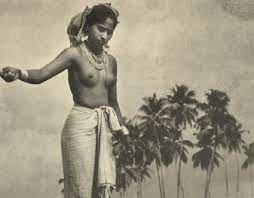"'Am I Not Relatable Anymore?' Do you relate? Watch the video to find out more, like, share, comment, subscribe..."
This week we discussed "I’m Beautiful the Way I Am: Empowerment, Beauty, and Aesthetic Labour" by Sarah Banet-Weiser. Here, we talked about how fashion vlogging and make-up videos have created an illusion of "oh this is something everyday people can do as well!" and these activities are showcased as something one does "just for fun".
In the process, their aesthetic labor comes about to be invisibilized. All of this is usually done through creating and maintaining a celebrity persona which is now something ‘ordinary’ people who aren’t conventionally famous can now access. "The celebrity of beauty vloggers absolutely depends on not losing one’s ‘ordinariness’. It is precisely the ordinariness of beauty vloggers, or their authenticity, that makes them consumable as celebrities to their online fan base (page 276). And the labor that they do to perform this "authenticity" comes to be written as "pleasure" and as something that "one loves to do".
The discussion reminded me of two of the popular lifestyle vloggers from India I used to follow as a teenager living in a small city. These two vloggers grew up in the capital city of India, Delhi. One is called Sejal Kumar and the other is called Komal Pandey. They both started their YouTube accounts by posting videos about their daily college life - they would post fun, raw videos about make-up, clothes, hauls from thrift stores in Delhi, videos about her relationships with partners, friends, mother, etc. Because the content was quite relatable, they gained many followers over the years.
Slowly, they started getting really famous (and rich as a result of their continued efforts) and eventually got an "upgrade" in 2020 - they transformed into something that was not so 'relatable' anymore, as per the audience. Both of them got a lot of hatred for becoming "fake". The video quality, their clothes, the people they talked to, the places they went to, the food they ate - all of them suddenly became inaccessible to a person from the lower-middle class.
Here are some of the comments I picked out from some of their later videos:
"Her "brand" has completely evolved from 'girl-next-door' to something super elite & premium. Maybe that's not 'selling' to her older audience."
"Her content was more relatable back then. These days she is trying to be mature like putting mature styling content which is irrelevant. Her styling is out of reach it is moreover for rich people not for the middle class. Her content back then was made for clg girls who are suppose to manage in limited funds."
"It somehow feels like you've drifted away from what you had promised your audience back when you started. Affordable fashion, relatable fashion. Your simplicity, and authenticity. You were so true to your audience. I can't see any more of it in your videos now. I miss this Komal Pandey like hell."
"We somewhere lost this bubbly and extremely beautiful Komal in your journey of transformation. It is not about how you dress up or how you do your makeup, but what I miss is this innocence, this smile, and this energy. All I hear you talking about is normalizing skin show, unsolicited opinions, hate on social media, etc etc.. Really Komal if you value your audience then get back to what you were. I really miss you."
"The best part about all your videos was that you were not at all pretentious, you were totally natural and relatable at the same time."
Some of these comments talk about how they have lost their "authentic selves" along the way. People liked them when they were "accessible" and "authentic". But now, people still follow them but often talk about how "fake" and "hollow" their fashion sense is, or how they have "westernized" so much and become like the Kardashians, etc.
I wonder why they still have so many followers if they are perceived as so fake?
When the hatred first began to show up in the comments, these vloggers started posting content like "Am I not relatable anymore?"- explaining how because they are growing as a person, their content/vision is meant to change as well. They created their own stories hashtag where they claimed that people wanted to bring their older versions back "#bringtheoldsejalback". (Funnily enough, I couldn't find more than 4 posts linked to these hashtags - 2 of them belong to the vlogger herself).
I wonder if this is just a way to make oneself more famous and get more content around such "controversies". I wonder if this is something that is just another way of presenting the illusion of "authentic" - by posting videos about how some people don't think you are authentic anymore and then again, getting more and more views and content out of it...going back in circles of more and more views, likes, evoking emotions relatability, making money out of content, etc.
It seems that after a point, one starts to take pleasure in self-branding. These circles go deeper and deeper, and will never push one out of self-commodification. I don't think the issue is whether these two influencers are truly genuine or not, but within the space of their creations and views, it seems that there will not be a space to question the bigger social problem of how maintaining authenticity and self-branding in the name of empowerment come to be organized and set up as pleasurable activities - hence, invisiblizing all the work that goes into maintaining these huge brands.
..................................
In the process, their aesthetic labor comes about to be invisibilized. All of this is usually done through creating and maintaining a celebrity persona which is now something ‘ordinary’ people who aren’t conventionally famous can now access. "The celebrity of beauty vloggers absolutely depends on not losing one’s ‘ordinariness’. It is precisely the ordinariness of beauty vloggers, or their authenticity, that makes them consumable as celebrities to their online fan base (page 276). And the labor that they do to perform this "authenticity" comes to be written as "pleasure" and as something that "one loves to do".
The discussion reminded me of two of the popular lifestyle vloggers from India I used to follow as a teenager living in a small city. These two vloggers grew up in the capital city of India, Delhi. One is called Sejal Kumar and the other is called Komal Pandey. They both started their YouTube accounts by posting videos about their daily college life - they would post fun, raw videos about make-up, clothes, hauls from thrift stores in Delhi, videos about her relationships with partners, friends, mother, etc. Because the content was quite relatable, they gained many followers over the years.
Slowly, they started getting really famous (and rich as a result of their continued efforts) and eventually got an "upgrade" in 2020 - they transformed into something that was not so 'relatable' anymore, as per the audience. Both of them got a lot of hatred for becoming "fake". The video quality, their clothes, the people they talked to, the places they went to, the food they ate - all of them suddenly became inaccessible to a person from the lower-middle class.
Here are some of the comments I picked out from some of their later videos:
"Her "brand" has completely evolved from 'girl-next-door' to something super elite & premium. Maybe that's not 'selling' to her older audience."
"Her content was more relatable back then. These days she is trying to be mature like putting mature styling content which is irrelevant. Her styling is out of reach it is moreover for rich people not for the middle class. Her content back then was made for clg girls who are suppose to manage in limited funds."
"It somehow feels like you've drifted away from what you had promised your audience back when you started. Affordable fashion, relatable fashion. Your simplicity, and authenticity. You were so true to your audience. I can't see any more of it in your videos now. I miss this Komal Pandey like hell."
"We somewhere lost this bubbly and extremely beautiful Komal in your journey of transformation. It is not about how you dress up or how you do your makeup, but what I miss is this innocence, this smile, and this energy. All I hear you talking about is normalizing skin show, unsolicited opinions, hate on social media, etc etc.. Really Komal if you value your audience then get back to what you were. I really miss you."
"The best part about all your videos was that you were not at all pretentious, you were totally natural and relatable at the same time."
Some of these comments talk about how they have lost their "authentic selves" along the way. People liked them when they were "accessible" and "authentic". But now, people still follow them but often talk about how "fake" and "hollow" their fashion sense is, or how they have "westernized" so much and become like the Kardashians, etc.
I wonder why they still have so many followers if they are perceived as so fake?
When the hatred first began to show up in the comments, these vloggers started posting content like "Am I not relatable anymore?"- explaining how because they are growing as a person, their content/vision is meant to change as well. They created their own stories hashtag where they claimed that people wanted to bring their older versions back "#bringtheoldsejalback". (Funnily enough, I couldn't find more than 4 posts linked to these hashtags - 2 of them belong to the vlogger herself).
I wonder if this is just a way to make oneself more famous and get more content around such "controversies". I wonder if this is something that is just another way of presenting the illusion of "authentic" - by posting videos about how some people don't think you are authentic anymore and then again, getting more and more views and content out of it...going back in circles of more and more views, likes, evoking emotions relatability, making money out of content, etc.
It seems that after a point, one starts to take pleasure in self-branding. These circles go deeper and deeper, and will never push one out of self-commodification. I don't think the issue is whether these two influencers are truly genuine or not, but within the space of their creations and views, it seems that there will not be a space to question the bigger social problem of how maintaining authenticity and self-branding in the name of empowerment come to be organized and set up as pleasurable activities - hence, invisiblizing all the work that goes into maintaining these huge brands.
..................................










Comments
Post a Comment